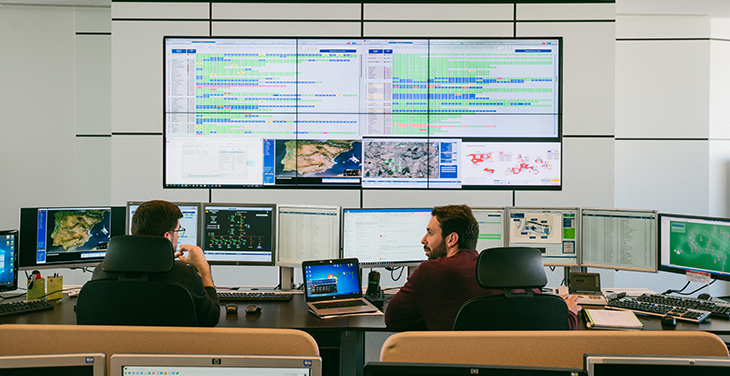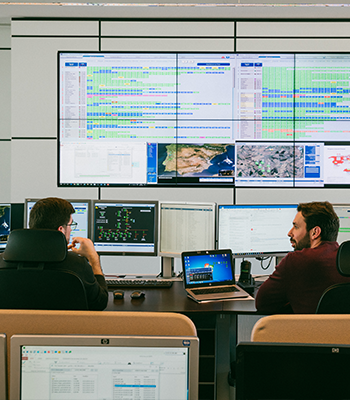A wind turbine installed on land can exceed 160 metres in height and have blades more than 80 meters in length; imagine, for a moment, having to walk this distance on foot just to go from one end to the other of these blades. They are enormous structures, with advanced technology, that allow us to make the most of the wind that nature provides us to produce electric energy.
These environmentally friendly "giants" exist in large numbers on wind farms around the world. They are usually installed in sparsely populated places, in order to minimise their impacts on the population. At the end of 2018, EDP Renováveis supervised almost 7000 turbines in more than 300 wind farms around the world.


The dispersion of turbines across the globe and their technological diversity - a single wind farm can include wind turbines from different manufacturers and different technological generations - is a major challenge for electricity companies: how to efficiently manage so many assets, in so many places and with such technical diversity?
It was this challenge that led to the creation of various Wind Offices around the world; operating centers that work continuously on the supervision and control of these machines (24 hours a day, 365 days a year) with at least one responsible employee.
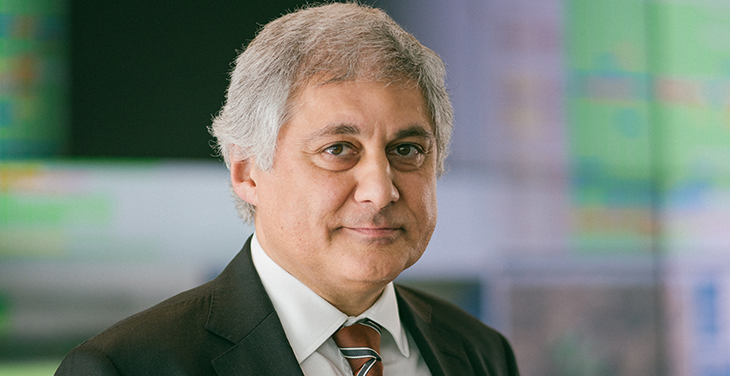
"This diversity means that we must have continuous and permanent supervision, in order to maximize the profitability of the business. That is, to guarantee the maximum availability of these assets."
Paulo Ribeiro, Remote Operations and Dispatch Center, EDPR
Global intelligence
In these continuous supervision rooms, the priority is to guarantee the functionality of the wind turbines. When a turbine has been found to have stopped working or is experiencing a problem, it is the responsibility of the dispatch operators to get it working and operating again as soon as possible.
In order to achieve this at a global level, those in charge are counting on the important help of a Supervisory Control and Data Acquisition (SCADA) system. This computer system has been developed specifically for this purpose. Operators can see from each computer screen and from the control room's videowall much of the information regarding the turbine's wind production, allowing to streamline the management of the assets. Among them:
- Geographical layout of parks and turbines
- State of the turbines, each identified with a color
- Alerts released regarding turbines
- Visualisation of schematics inside the turbines
- Detail screen that allows you to operate each turbine remotely
The SCADA system is a computer brain, capable of collecting extremely variable and dispersed information (relative to each existing turbine model in the various parks in the world) and presenting it in a homogeneous way, thus, facilitating human intervention in each situation.
In the words of Paulo Ribeiro: "On the one hand, we have 13 different turbine manufacturers, and on the other hand, as we have been operating for more than 20 years, we even have several generations of turbines from the same manufacturer. So, because there are different data models and information coming from the park, that if it was not stardardised, it was going to create a complicated challenge here. "
Thanks to SCADA, it is possible to manage all of EDPR's wind power assets (and some solar farms) efficiently. In Porto Dispatch, there are usually two employees working, but there are many times when only one person is overseeing operations.
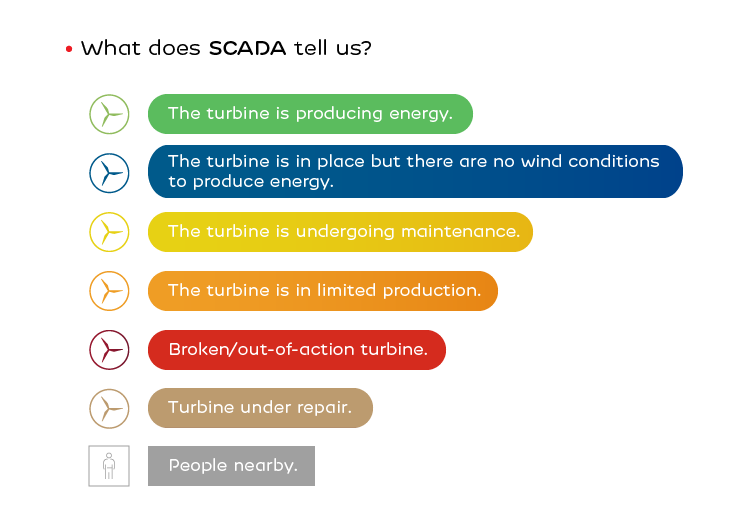

The colour code immediately identifies the status of each of the approximately 7,000 existing turbines. And it does so consistently throughout the system: regardless of the screen you are on, and the level of detail you want to analyze, whether in an overall geographic view of the parks, or a particular turbine, the information is presented in a coherent way and according to the same colour code.
"Since all the information is translated into the same type of language, it is easier for us to be able to operate, because all turbines, regardless of their model and manufacturer, have exactly the same language," shares Diogo Silva, operator of the Porto Dispatch since 2006.
A day at the Porto Dispatch
The Porto Dispatch is the EDP Renováveis' main dispatch centre, as it is the only one with global vision of all the wind and solar parks in the world. The Oviedo Dispatch is the main one for operations in Spain, while Houston is the main one for North American operations.
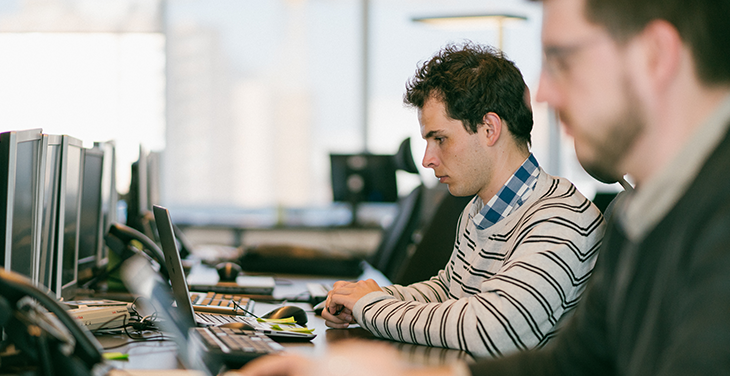

With such a wide range of assets, activities at the Remote Operation and Dispatch Center of Porto are not exactly routine and depend on weather conditions and scheduled jobs. This is because - in addition to assuring optimum turbine functions, responding to alerts and triggering actions to maximize the availability of assets - the Dispatch officers, along with field teams, also coordinate interventions to repair damages, as well as the needs of interventions scheduled by network operators.
That is, there are three main activities in the dispatch: incident response (when an alert is triggered in SCADA), planned interventions (when it is necessary, for example, to interrupt operation in a park to perform maintenance operations) and power restriction (where there is a surplus in energy production compared to consumption needs, it is necessary to reduce production).
"The employees of this room perform the functions of real-time operation of the EDP Renováveis assets, whether they are wind farms or solar parks," explains Vitor Fonseca, Head of the Dispatch Center. "We have people working in shifts (3 shifts a day) and their job is to remotely monitor and command all those assets."
Eyes on the ground
When the turbines operation cannot be done remotely, a team is activated to go to its location. In fact, the daily work done by the Dispatch includes a lot of interaction with the local teams. Whenever it is necessary to disconnect a turbine in the field, the task is performed by professionals while they remain in telephone contact with the Dispatch. This is to ensure adhesion to safety conditions - to make sure that the electric current is actually interrupted and the activity can be controlled by the local team.
It is for this reason that the "great brain" SCADA includes indicators about the presence of people in the vicinity. Whenever a technician enters a park, an electrical substation, or inside a turbine (yes, it is possible to climb to a wind turbine and walk inside), the Dispatch must be notified. At this point, the operators enter into SCADA the information that there are people present, so that all who have access to the system are warned. If there are people nearby, no manoeuvres can be performed without a telephone follow-up between the Dispatch and the local team.
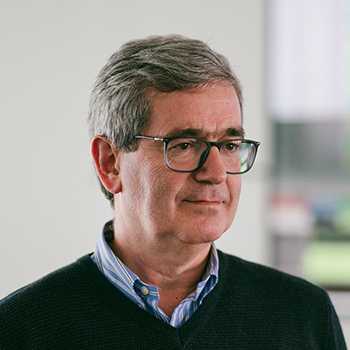
"Manual operations can be done remotely through a screen where commands are given to the turbine. If it is a local problem, the tower base has a cabinet with a touch screen, on which you can search for the error and promptly troubleshoot the issue. Then, if it is necessary to replace something, the teams have to climb the tower (these are 80-100m high), yet the more modern wind turbines already have lifts. Inside the turbine itself, a person can stand."
Vitor Fonseca, Head of Dispatch Center
In addition to operating the turbines, the Dispatch operator also has access to the electrical substations. That is, each park injects energy into a substation, which in turn will connect to the transporter network or the energy distributor - in the case of Portugal, REN or EDP Distribuição. Thus, there are also manoeuvres to be performed in the substations, in collaboration with the Dispatch Centers, which rely on coordination and telephone interaction with the Porto Dispatch.
Lords of the wind
Having responsibility for operating thousands of turbines at your fingertips is not an easy or stress-free task. Diogo Silva, EDPR employee for about 13 years, says that this applies particularly during the night shift, during which he does not have local support nor is anyone working at the company.
At these times (at all times, in fact) decisions about each operation have to be well thought out and always justified - especially when we think that any manoeuvre can have an impact on people and goods.
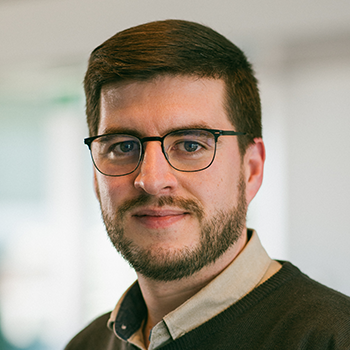
"For example, when it snows, snow accumulates on the blades and then ice can form. These blocks of ice (which can weigh up to 40kg) stay on the turbine. One has to be mindful that, when this possibility exists, any work must be done carefully. If there is a person passing within a 400-metre radius of a turbine, they can be hit by an ice block with fatal consequences."
Diogo Silva, operators of the Porto Dispatch Center
In fact, manoeuvres as simple as "disarming" or "rearming" - in other words, turning a turbine or set of machines off or on again - become more nerve-wracking when you think of the value of the goods themselves and the risks that a detached piece of equipment or a falling block of ice may mean for the workers.
International collaboration
The exploration of wind assets represents more than 90% of EDP Renováveis' installed capacity in the world and there are 5 Wind Energy Centers: Porto, Oviedo, Houston, Bucharest and Vitória (Brazil). The Porto Dispatch is the only one with the ability of 'global vision' on all wind farms, in all territories and is therefore able to control all of EDP Renováveis' assets around the world.
Except for those in the United States, because US law does not allow the control of assets in its territory from other territories, and it is only possible to view and monitor them from the Porto Office. As such, it is the Houston Dispatch that perform the local operations of the American parks. The orders are organised in a complementary way, which means that if one fails, there is always another one that can guarantee the same functions.

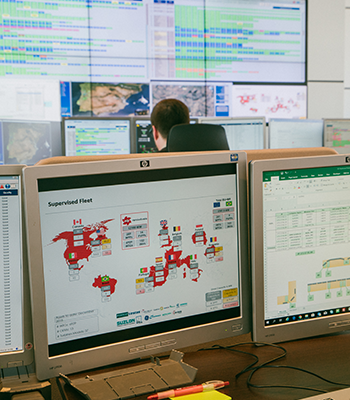
EDP Renováveis operates in 11 countries, 3 of which are in North America (USA, Canada and Mexico), and is also present in Brazil and Europe: Portugal, Spain, France, Belgium, Italy, Poland and Romania. Upcoming destinations include Greece and the United Kingdom, where offshore wind farms are now in a preparation phase.
The presence of EDPR in several countries has contributed to an accumulation of varied knowledge and experience, which enhances the continuous improvement of services and sustainability in the company. Paulo Ribeiro emphasises the importance of this sharing among dispatches around the world, as a way to make the best use of the best practices of operation, the knowledge and experiences that each office capitalises on.
